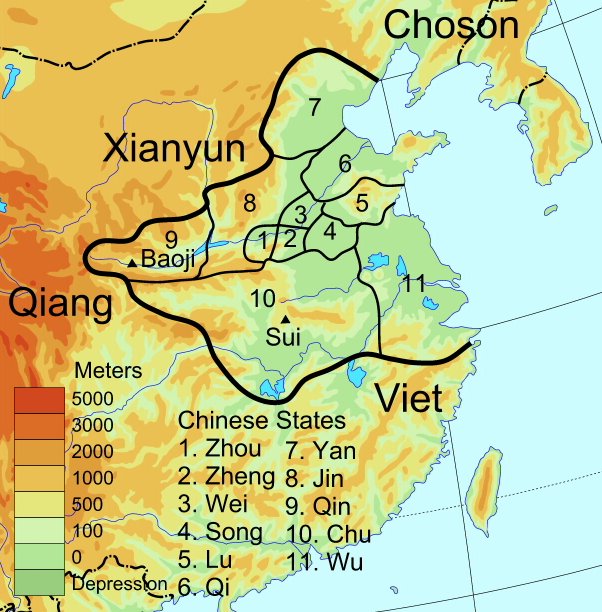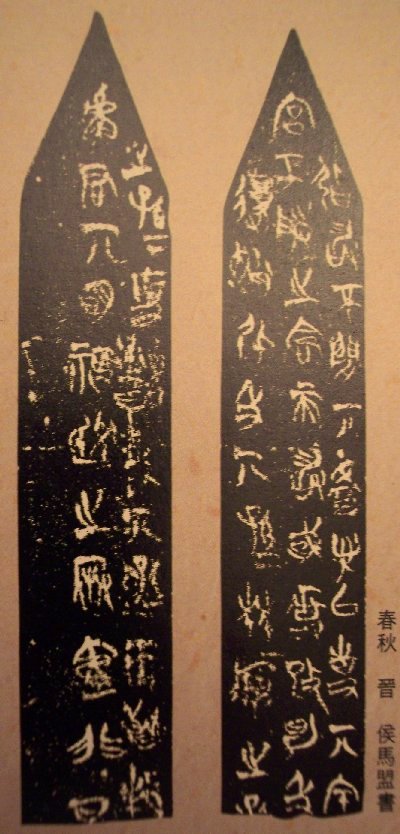
Spring Autumn Period Territories |
Spring Autumn & Warring States Periods

Spring Autumn Period Territories |
Spring Autumn Period (c. 800-300 BC)
Pre-Chin Dynasty’s writing were found during the Han & Jin Dynasties but could not be handed down. Until recently, writing on cloth, wood and jade were found. The writing were light and swift which were totally different from Zuan Shu ( 篆 書 ) in the Chin Dynasty.
The picture shown below is the famous Hou Ma Meng Shu written on jade. The characteristic of each stroke is that the starting (head) is heavy and the ending (tail) is light, resembling a tadpole. This writing gave some hint of the creation and development of Li and Tsao Styles in the Han Dynasty.

Warring States Period (770-221 BC)
The inscriptions during this period were written in the language of the Pre-Chin Periods. Scripts of the Pre-Chin Periods also included the ancient languages of the Six States. They were roughly classified as Great Seal Scripts.
Great Seal Scripts are not very different from Ancient Scripts (Gu Wen 古 文 ). They are a synthesis of the variants of Ancient Scripts. The most famous example of Great Seal Scripts is Stone Drum Inscriptions ("Thu Gu Wen" 石 鼓 文 ), so named because the characters were engraved onto the tops and sides of ten large stones shaped like drums. These drums opened an important era of Chinese calligraphy and are the first known examples of Chinese calligraphy engraved onto stone. The drums were discovered in the province of Shang Xi in the early Tang Dynasty (c. 618). The inscriptions on these Stone Drums may be seen at the Temple of Confucius in Beijing. It has been the subject of Chinese calligraphy, linguistics, and archaeology for centuries. The famous Tang Dynasty writer, Han Yu, published a long poetic eulogy in praise of these characters. Unfortunately, only two hundred characters remain, and many versions of rubbings of those characters taken by scholars and craftsmen have made the stones in even worn conditions.
